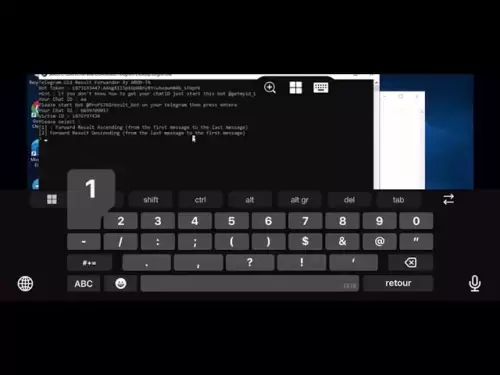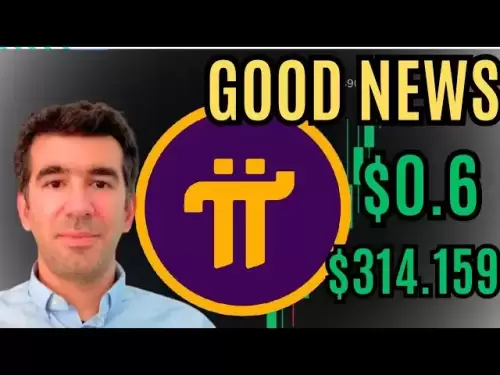-
 Bitcoin
Bitcoin $107,232.8340
-2.15% -
 Ethereum
Ethereum $2,632.5336
-1.47% -
 Tether USDt
Tether USDt $1.0003
0.00% -
 XRP
XRP $2.2537
-3.34% -
 BNB
BNB $687.0370
-0.24% -
 Solana
Solana $170.7417
-4.13% -
 USDC
USDC $0.9997
-0.01% -
 Dogecoin
Dogecoin $0.2190
-3.93% -
 Cardano
Cardano $0.7387
-3.48% -
 TRON
TRON $0.2747
-0.80% -
 Sui
Sui $3.5585
-3.72% -
 Hyperliquid
Hyperliquid $33.1594
-9.78% -
 Chainlink
Chainlink $15.4583
-3.36% -
 Avalanche
Avalanche $23.0833
-2.02% -
 Stellar
Stellar $0.2808
-2.93% -
 Toncoin
Toncoin $3.4299
13.52% -
 UNUS SED LEO
UNUS SED LEO $9.0774
1.43% -
 Shiba Inu
Shiba Inu $0.0...01408
-3.16% -
 Bitcoin Cash
Bitcoin Cash $408.3387
-2.23% -
 Hedera
Hedera $0.1829
-3.88% -
 Litecoin
Litecoin $94.4250
-2.42% -
 Polkadot
Polkadot $4.4699
-2.41% -
 Monero
Monero $350.6126
-7.74% -
 Bitget Token
Bitget Token $5.2157
-2.83% -
 Pepe
Pepe $0.0...01365
-2.66% -
 Dai
Dai $0.9998
0.00% -
 Pi
Pi $0.7239
-3.24% -
 Ethena USDe
Ethena USDe $1.0007
0.01% -
 Uniswap
Uniswap $6.6326
2.37% -
 Aave
Aave $260.9552
-4.58%
How to view VWAP in intraday trading Is it suitable for short-term operations
VWAP is a useful tool for intraday trading, helping traders identify trends and entry/exit points, but it has limitations like lag and potential market manipulation.
May 27, 2025 at 10:57 am
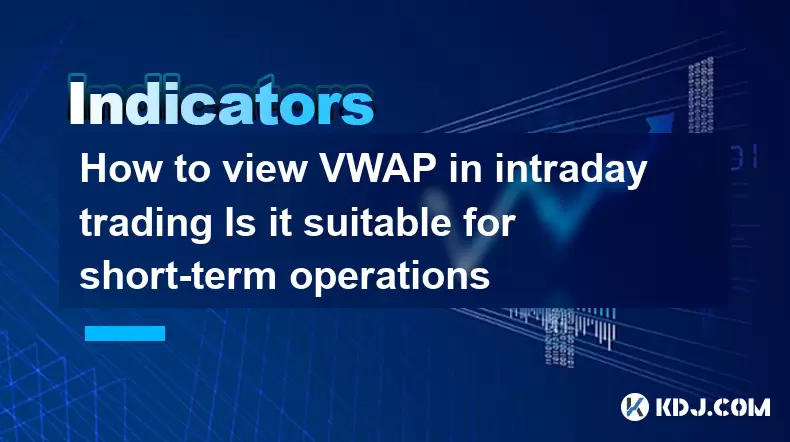
How to View VWAP in Intraday Trading: Is It Suitable for Short-Term Operations?
Intraday trading, also known as day trading, involves buying and selling financial instruments within the same trading day. One of the key tools traders use to make informed decisions is the Volume Weighted Average Price (VWAP). VWAP is a trading benchmark used by investors to determine the average price of a security, weighted by volume. In this article, we will explore how to view VWAP in intraday trading and assess its suitability for short-term operations.
Understanding VWAP
VWAP is calculated by adding up the dollars traded for every transaction (price multiplied by the volume) and then dividing by the total shares traded for the day. This gives traders an average price that is more representative of the actual trading activity than a simple average price. VWAP can be a useful tool for intraday traders because it provides a real-time benchmark against which to compare current prices.
To understand how VWAP can be used in intraday trading, consider that if the current price of a security is above the VWAP, it is considered overvalued, and if it is below the VWAP, it is considered undervalued. This can help traders make decisions about when to buy or sell.
How to View VWAP in Intraday Trading
Viewing VWAP in intraday trading requires access to a trading platform that provides real-time data and charting capabilities. Here are the steps to view VWAP on a typical trading platform:
- Open your trading platform: Ensure that you have a trading account with a broker that offers real-time data and charting tools.
- Select the security you want to trade: Choose the stock, cryptocurrency, or other financial instrument you are interested in.
- Access the charting tool: Navigate to the charting section of your trading platform.
- Add VWAP to the chart: Look for an option to add indicators or overlays to your chart. Select VWAP from the list of available indicators.
- Adjust the time frame: Set the time frame to intraday, typically ranging from 1-minute to 1-hour charts, depending on your trading strategy.
Once you have added VWAP to your chart, you will see a line that represents the VWAP for the selected security over the chosen time frame. This line will update in real-time as new trades are executed.
Using VWAP for Short-Term Operations
VWAP can be a valuable tool for short-term operations, but its effectiveness depends on how it is used. Here are some ways traders can incorporate VWAP into their short-term trading strategies:
- Trend Confirmation: Traders can use VWAP to confirm the direction of the current trend. If the price is consistently above the VWAP, it may indicate a bullish trend, while a price consistently below the VWAP may indicate a bearish trend.
- Entry and Exit Points: VWAP can help traders identify potential entry and exit points. For example, buying when the price moves above the VWAP and selling when it moves below can be a strategy for taking advantage of short-term price movements.
- Mean Reversion: Some traders use VWAP as a mean reversion indicator. If the price moves significantly away from the VWAP, it may eventually revert back to the VWAP, providing opportunities for short-term trades.
Limitations of Using VWAP in Intraday Trading
While VWAP can be a useful tool, it is not without its limitations. Here are some factors to consider when using VWAP for intraday trading:
- Lag: VWAP is a lagging indicator because it is based on historical data. This means that it may not always provide timely signals for short-term trades.
- Volatility: In highly volatile markets, the VWAP can be less reliable as it may not accurately reflect the current market conditions.
- Market Manipulation: In some cases, large traders may attempt to manipulate the VWAP by executing trades at specific times or volumes, which can affect its accuracy.
Practical Example of Using VWAP in Intraday Trading
To illustrate how VWAP can be used in intraday trading, consider the following example:
Suppose you are trading Bitcoin (BTC) and you have added VWAP to your 15-minute chart. You notice that the price of BTC has been trading above the VWAP for most of the day, indicating a bullish trend. You decide to enter a long position when the price dips back to the VWAP, expecting it to continue its upward trend.
- Monitor the price: Keep an eye on the price of BTC and wait for it to approach the VWAP.
- Enter the trade: When the price touches the VWAP, you enter a long position, buying BTC at the VWAP price.
- Set a stop-loss: To manage risk, set a stop-loss order slightly below the VWAP to limit potential losses if the price moves against you.
- Monitor the trade: Continue to monitor the price and the VWAP. If the price moves significantly above the VWAP, you may consider taking profits.
- Exit the trade: When the price reaches your target or if it moves back below the VWAP, you exit the trade, selling your BTC.
This example demonstrates how VWAP can be used to identify potential entry and exit points for short-term trades. However, it is important to remember that no single indicator should be used in isolation. Combining VWAP with other technical indicators and fundamental analysis can help improve the accuracy of your trading decisions.
Frequently Asked Questions
Q1: Can VWAP be used for all types of securities?
A1: VWAP can be used for various types of securities, including stocks, cryptocurrencies, and other financial instruments. However, its effectiveness may vary depending on the liquidity and trading volume of the security. For securities with low trading volume, VWAP may be less reliable.
Q2: How often should I recalculate VWAP during the trading day?
A2: VWAP is typically recalculated throughout the trading day as new trades are executed. Most trading platforms update the VWAP in real-time, so you do not need to manually recalculate it. However, you may want to monitor the VWAP at regular intervals to stay informed about changes in the average price.
Q3: Is VWAP more suitable for certain trading strategies?
A3: VWAP can be used in various trading strategies, but it is particularly useful for trend-following and mean reversion strategies. Traders who focus on short-term price movements and trend confirmation may find VWAP to be a valuable tool. However, it is less effective for strategies that rely on long-term price predictions or fundamental analysis.
Q4: Can VWAP be used in conjunction with other indicators?
A4: Yes, VWAP can be used in conjunction with other technical indicators to improve the accuracy of trading decisions. Common indicators that can be used alongside VWAP include moving averages, Relative Strength Index (RSI), and Bollinger Bands. Combining multiple indicators can help confirm signals and reduce the risk of false positives.
Disclaimer:info@kdj.com
The information provided is not trading advice. kdj.com does not assume any responsibility for any investments made based on the information provided in this article. Cryptocurrencies are highly volatile and it is highly recommended that you invest with caution after thorough research!
If you believe that the content used on this website infringes your copyright, please contact us immediately (info@kdj.com) and we will delete it promptly.
- Catzilla is capturing attention amid the ongoing crypto surge, sparking curiosity about its potential for remarkable growth
- 2025-05-29 05:35:14
- 3 Meme Coins With the Most Potential in 2025
- 2025-05-29 05:35:14
- Mutuum Finance (MUTM) Presale Raises Over $9.3M From 11,500+ Investors Ahead of Token Price Rise to $0.035
- 2025-05-29 05:30:13
- Unstaked (UNSD) Shifts Focus Away From Sentiment and Toward Output
- 2025-05-29 05:30:13
- Troller Cat (TCAT) Breaks Out, Pepe Charges Ahead, and Troller Cat Stage 6 Raised Over $150K—Best Cryptos to Stake Revealed
- 2025-05-29 05:25:13
- Texas Is the Next State to Establish a Strategic Bitcoin Reserve After New Hampshire
- 2025-05-29 05:25:13
Related knowledge
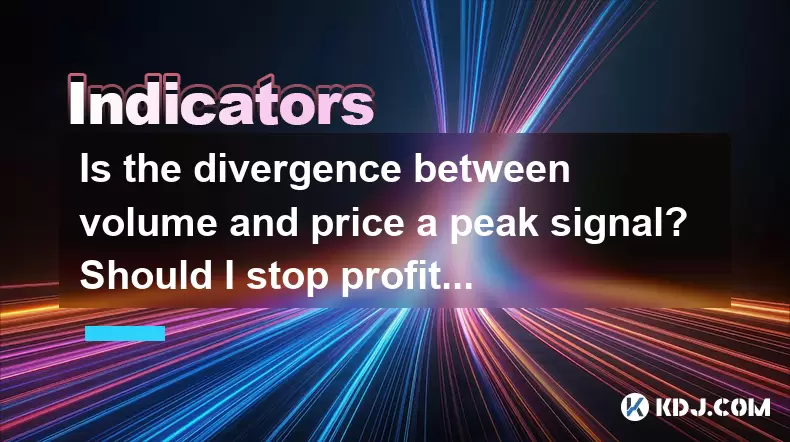
Is the divergence between volume and price a peak signal? Should I stop profit or hold?
May 29,2025 at 04:43am
Is the divergence between volume and price a peak signal? Should I stop profit or hold? In the world of cryptocurrencies, traders often look for signals that can indicate potential peaks or troughs in market trends. One such signal that traders frequently monitor is the divergence between volume and price. This phenomenon occurs when the trading volume ...
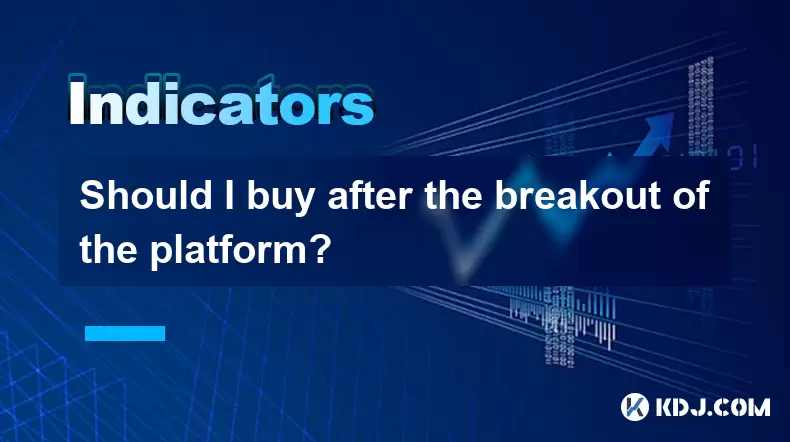
Should I buy after the breakout of the platform?
May 29,2025 at 04:35am
Understanding Breakouts in CryptocurrencyBreakouts in the cryptocurrency market occur when the price of a digital asset moves above a defined resistance level or below a support level, often leading to increased volatility and trading activity. A breakout can signal the start of a new trend, either bullish or bearish, depending on the direction of the p...
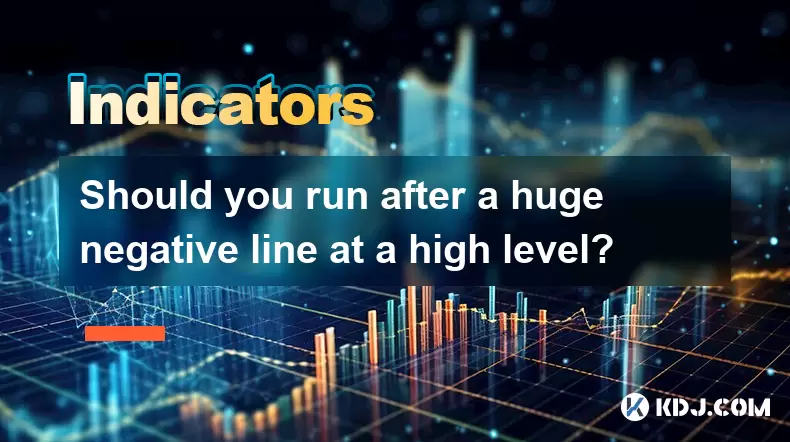
Should you run after a huge negative line at a high level?
May 29,2025 at 04:21am
Should you run after a huge negative line at a high level? When navigating the volatile world of cryptocurrencies, one of the most challenging decisions traders face is whether to chase a significant price drop after a high. A huge negative line at a high level often signals a sharp reversal in market sentiment, and understanding how to react to such mo...
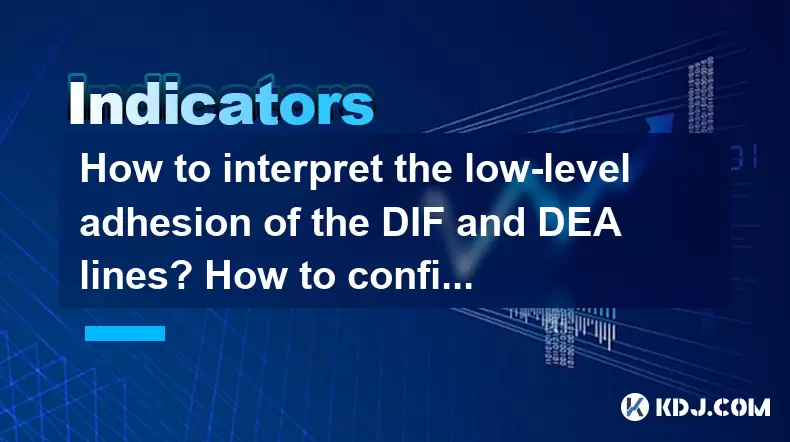
How to interpret the low-level adhesion of the DIF and DEA lines? How to confirm the direction selection signal?
May 29,2025 at 02:49am
Understanding the low-level adhesion of the DIF and DEA lines in the context of cryptocurrency trading involves delving into the specifics of the Moving Average Convergence Divergence (MACD) indicator. The MACD is a trend-following momentum indicator that shows the relationship between two moving averages of a cryptocurrency's price. The DIF line, also ...
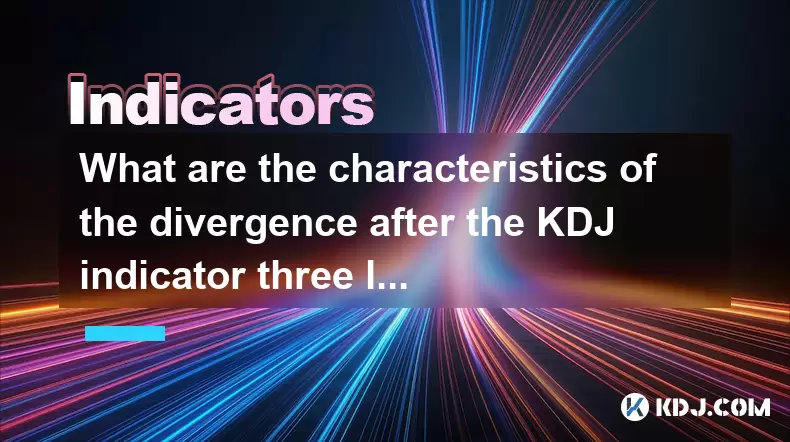
What are the characteristics of the divergence after the KDJ indicator three lines merge into one? What are the direction selection signals?
May 29,2025 at 03:14am
The KDJ indicator is a popular tool used in the cryptocurrency trading community to identify potential trend reversals and to gauge the momentum of price movements. When the three lines of the KDJ indicator—namely the K line, D line, and J line—merge into one, it often signifies a significant event in the market. This phenomenon is known as a divergence...
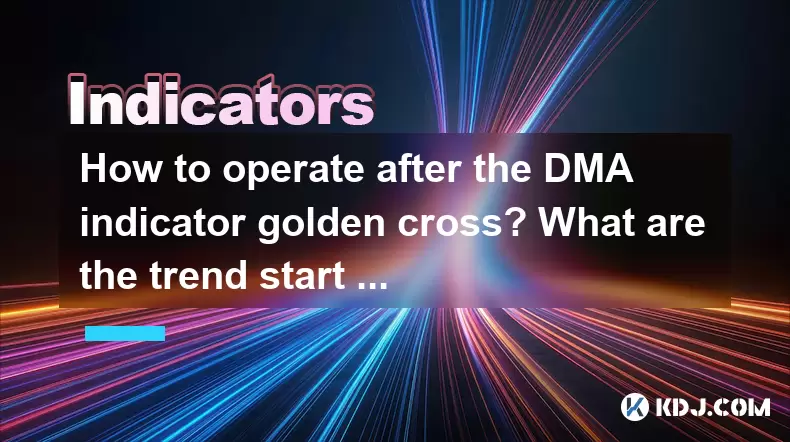
How to operate after the DMA indicator golden cross? What are the trend start signals?
May 29,2025 at 12:21am
How to Operate After the DMA Indicator Golden Cross? What Are the Trend Start Signals? The DMA (Dual Moving Average) indicator is a popular tool among cryptocurrency traders for identifying potential trend changes and entry points. A golden cross on the DMA indicator occurs when a shorter-term moving average crosses above a longer-term moving average, s...

Is the divergence between volume and price a peak signal? Should I stop profit or hold?
May 29,2025 at 04:43am
Is the divergence between volume and price a peak signal? Should I stop profit or hold? In the world of cryptocurrencies, traders often look for signals that can indicate potential peaks or troughs in market trends. One such signal that traders frequently monitor is the divergence between volume and price. This phenomenon occurs when the trading volume ...

Should I buy after the breakout of the platform?
May 29,2025 at 04:35am
Understanding Breakouts in CryptocurrencyBreakouts in the cryptocurrency market occur when the price of a digital asset moves above a defined resistance level or below a support level, often leading to increased volatility and trading activity. A breakout can signal the start of a new trend, either bullish or bearish, depending on the direction of the p...

Should you run after a huge negative line at a high level?
May 29,2025 at 04:21am
Should you run after a huge negative line at a high level? When navigating the volatile world of cryptocurrencies, one of the most challenging decisions traders face is whether to chase a significant price drop after a high. A huge negative line at a high level often signals a sharp reversal in market sentiment, and understanding how to react to such mo...

How to interpret the low-level adhesion of the DIF and DEA lines? How to confirm the direction selection signal?
May 29,2025 at 02:49am
Understanding the low-level adhesion of the DIF and DEA lines in the context of cryptocurrency trading involves delving into the specifics of the Moving Average Convergence Divergence (MACD) indicator. The MACD is a trend-following momentum indicator that shows the relationship between two moving averages of a cryptocurrency's price. The DIF line, also ...

What are the characteristics of the divergence after the KDJ indicator three lines merge into one? What are the direction selection signals?
May 29,2025 at 03:14am
The KDJ indicator is a popular tool used in the cryptocurrency trading community to identify potential trend reversals and to gauge the momentum of price movements. When the three lines of the KDJ indicator—namely the K line, D line, and J line—merge into one, it often signifies a significant event in the market. This phenomenon is known as a divergence...

How to operate after the DMA indicator golden cross? What are the trend start signals?
May 29,2025 at 12:21am
How to Operate After the DMA Indicator Golden Cross? What Are the Trend Start Signals? The DMA (Dual Moving Average) indicator is a popular tool among cryptocurrency traders for identifying potential trend changes and entry points. A golden cross on the DMA indicator occurs when a shorter-term moving average crosses above a longer-term moving average, s...
See all articles





















